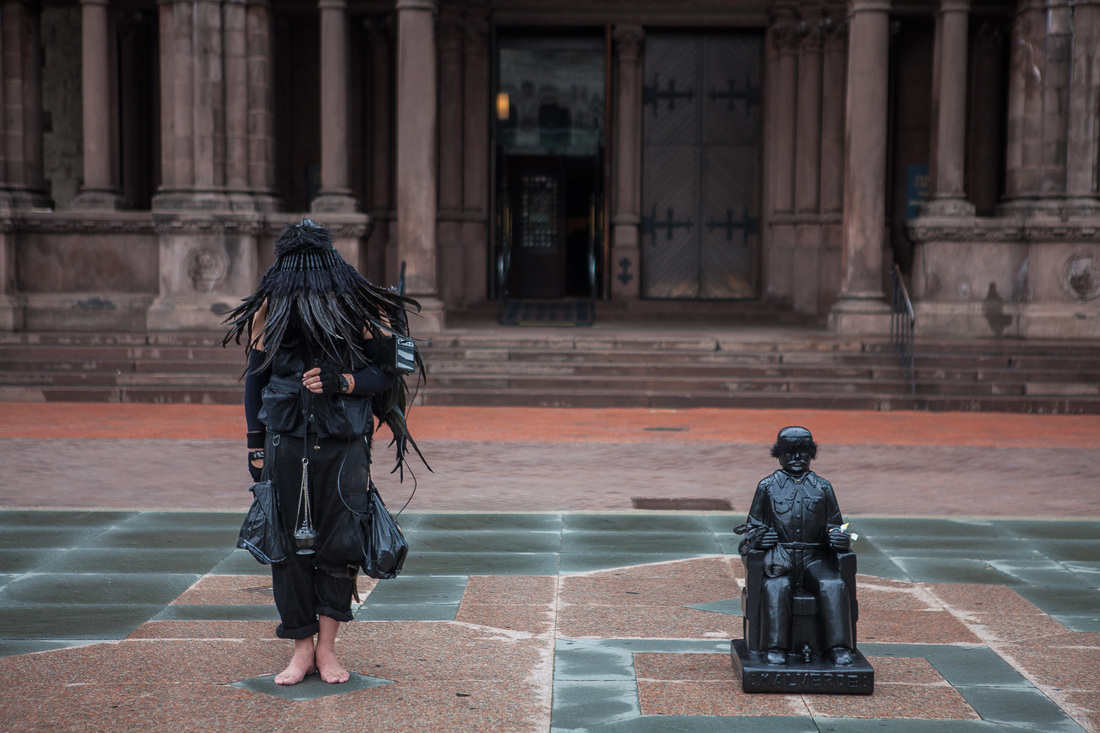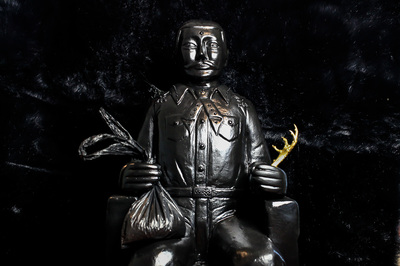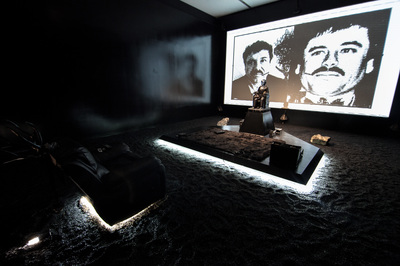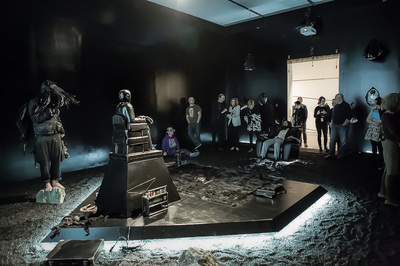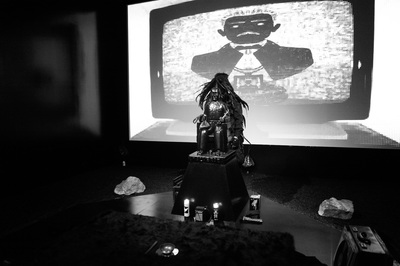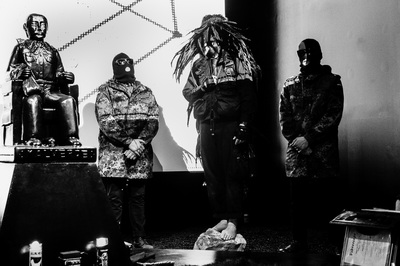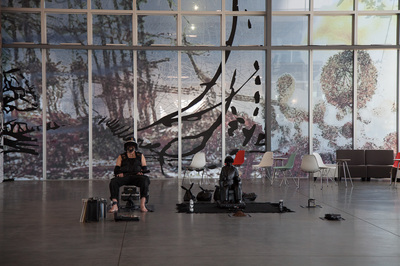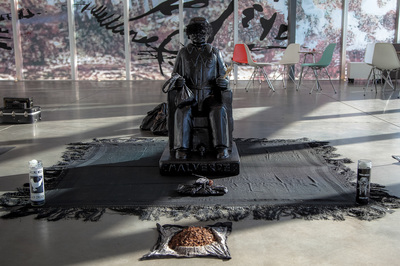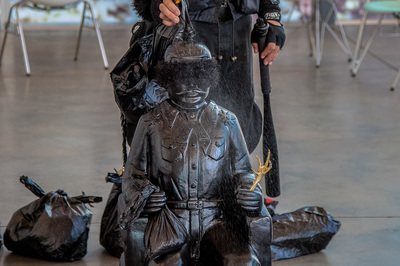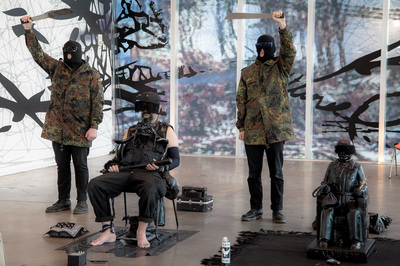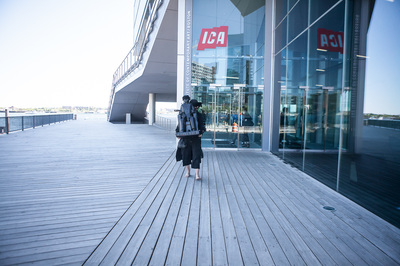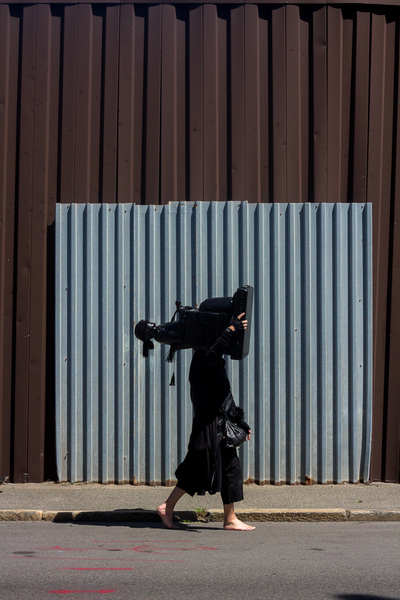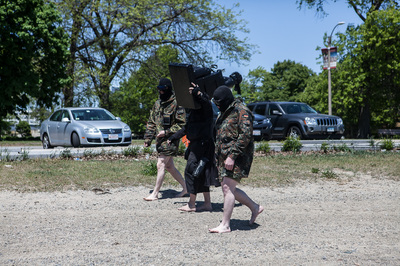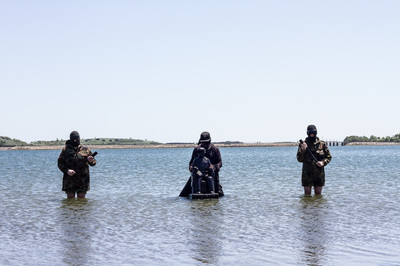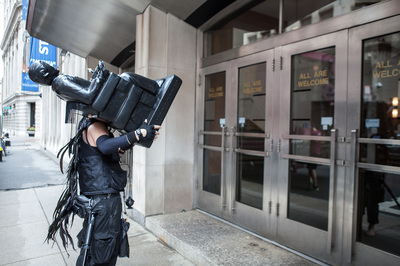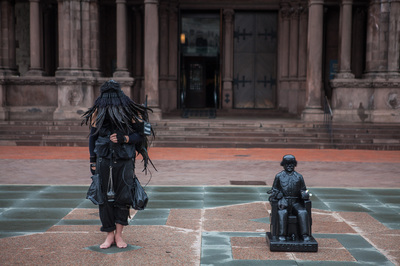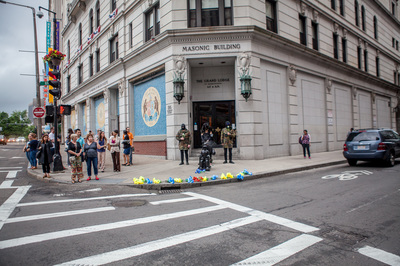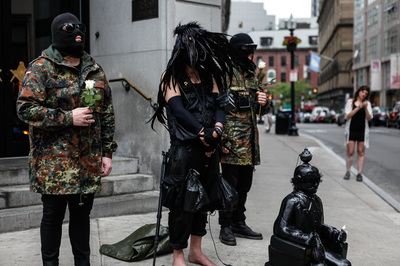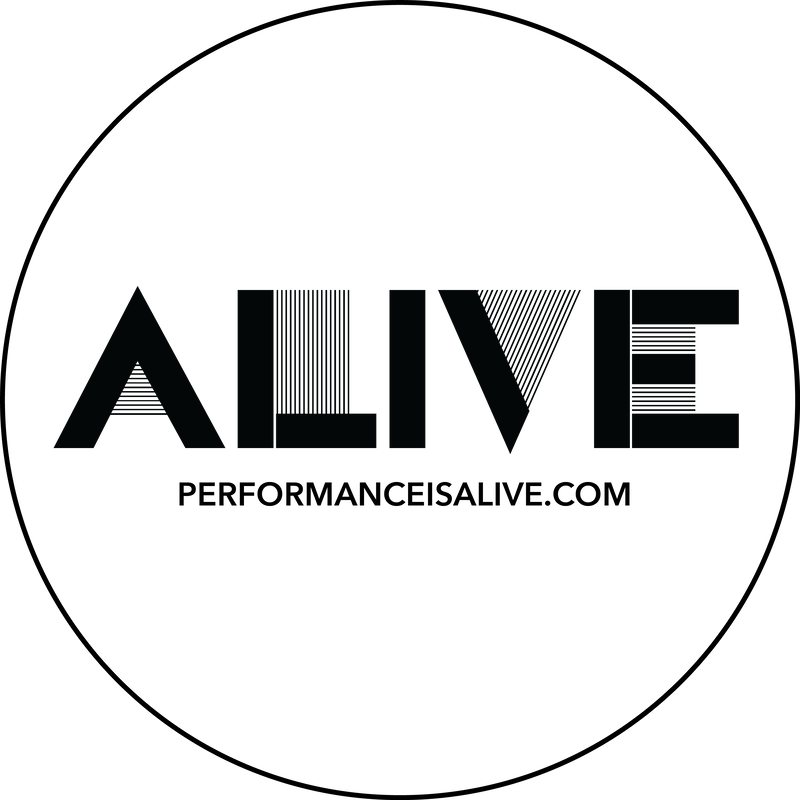|
There are a handful of cities within the U.S. that not only recognize performance art as a meaningful contribution to the contemporary art world but also financially sponsor its development. As noted in last weeks post with performance art curator and practitioner, Jill McDermid-Hokanson, there is limited funding for performance art. Limited, but not non-existent. This year The Institute of Contemporary Art (ICA) Boston awarded 2 out of 4 James and Audrey Foster Prizes to current performance art practitioners - Vela Phelan and Sandrine Schaefer. I have followed Vela Phelan's work for many years. His visually alluring performance rituals blend contemporary culture, technology and religious deities. Phelan has a bewildering ability to charge spaces and objects. This energy often lingers with viewers post-performance and further extends into the secular world. I am pleased to share Vela Phelan's work for our next Artist Feature. The feature focuses on Phelan's exhibition and performance series "Obscurus Fidem" is a site-specific video altar dedicated to Jesús Malverde, a folk legend elevated to the rank of sainthood by Mexican narco-traffickers currently on view at ICA Boston. Thus far, Phelan has completed six of nine live actions entitled "Obscurus Novena" in honor of Jesús Malverde. Enjoy the interview and go see the exhibition! (On view thru August 9th.) - Quinn Quinn Dukes: When did your relationship and reverence toward Jesus Malverde begin? Vela Phelan: I get this question a lot and honestly it's hard to say, "Obscurus Fidem" means "Unknown Faith" and in a lot of ways that represents my relationship with Malverde. I remember a digi-spiritual time that lead me to revere Malverde which developed over two years of Google image searches of El Chapo Guzman, episodes of Gang Land, Youtube gang stacking videos and modern uncanonized saint web searches. QD: How has the transference of energy within your Obscurus Fidem installation evolved over the past three weeks? Have you found that visitors transmit their own energy within the space? Do they remain within the installation for long periods of time? VP: I visit the video altar more than once a week to tend to the space, sounds and mood that has been altered by time, visitors and the ICA’s staff. This is the most organic and simple action I commit to for Obscurus Fidem and the one I learn from the most. I have walked into visitors taking selfies on the La-Z-Boy chair, standing at the entrance for long periods of time before going in or not going in at all, playing with the gravel or simply standing in a corner letting it sink in. Watching all of the visitors museum survival skills stresses me out and sets me free at the same time. At first, I wanted to talk to the visitors, ask them if they could tell Malverde’s platform was a giant, black home plate or what they thought of the hanging black garbage bags but I realized they were better off left to their own sensitivity and observational interpretations. I created a space where they could dream and space out and not complicate the experience with intellect. In addition, the act of taking Malverde outside of the ICA to perform and absorb the energies of public spaces and then bringing him back into the video alter has made the transference of different energies even more interesting. Between visitor’s, their smart phones, the video alter, performances and live sound, I have learned that Obscurus Fidem is a simmering cauldron of digital, organic and human transmissions, cooking slowly. QD: You mention that you are motivated by the following questions:
VP: They’re questions I may never be able to answer and I’m not sure if that’s my goal. I want to bring together images, objects, space and time in a way that allow me to experiment with these quandaries. More than looking for an answer, my intent is to decorate the question. QD: How has the experience of working within a museum differ from an alternative art space? VP: The only difference is money. The Foster Prize gave me the opportunity to create and afford Obscurus Fidem. However I am equally grateful for every experience I have had with all art spaces, festivals and collectives whether they have funded me economically or not. The people’s vibe and work ethic varies equally throughout any platform and ultimately are more important than monetary funding. This is true with the ICA’s John Andress and Janelle Porter. They have funded me with their trust, no matter what I wanted to do in my video altar or outside it, they have never hesitated in saying yes. That faith is worth gold and it is always gold no matter its economical status. VELA PHELAN |
CONTRIBUTORSIan Deleón Archives
July 2023
|
|
MISSION // Based in Brooklyn, NYC, PERFORMANCE IS ALIVE is an online platform featuring the work and words of current performance art practitioners. Through interviews, reviews, artists features, sponsorship and curatorial projects, we aim to support the performance community while offering an access point to the performance curious.
Performance Is Alive is a fiscally sponsored project of Fractured Atlas, a 501(c)(3) charity. Contributions made payable to Fractured Atlas for the purposes of Performance Is Alive are tax-deductible to the extent permitted by law. |
